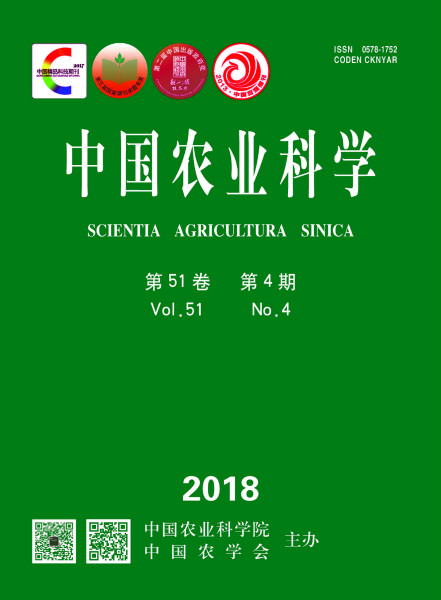-
Modeling the Effects of Post-Anthesis Waterlogging Stress Under Different Fertilizer Levels on Rapeseed Yield and Its Formation
- SONG ChuWei, CAO HongXin, ZHANG WenYu, ZHANG WeiXin, CHEN WeiTao, FENG ChunHuan, GE SiJun
-
Scientia Agricultura Sinica. 2018, 51(4):
662-674.
doi:10.3864/j.issn.0578-1752.2018.04.006
-
 Abstract
(
414 )
Abstract
(
414 )
 HTML
(
8 )
HTML
(
8 )
 PDF (503KB)
(
217
)
PDF (503KB)
(
217
)
 Save
Save
-
References |
Related Articles |
Metrics
【Objective】Water-logging is one of the main meteorological disasters in rapeseed production areas in the Yangze River valley. This study aimed at quantifying the effects of waterlogging at anthesis stage under different fertilizer levels on rapeseed grain yield and yield components, which could provide scientific basis for waterlogging stress assessment, forecasting, and early warning in rapeseed production. 【Method】 The experiments in two-growing season were conducted during 2014-2016 with different waterlogging durations at anthesis stage under different nitrogen levels at Jiangsu Academy of Agricultural Sciences. Using two rapeseed cultivars (Ningyou 18, and Ningza 19) as experimental materials, the treatments were waterlogging at anthesis stage of 0, 3, 6, and 9 days in pot, and 0, 3, and 6 days in pool under different fertilization conditions, including N1 (N 0.018 kg·m-2, P2O5 0.012 kg·m-2, K2O 0.018 kg·m-2, and borax 0.0015 kg·m-2), and N0 (N 0 kg·m-2). 【Result】The results of this study showed that: (1) The yield per plant and pods per plant for Ningyou 18 and Ningza 19 under pot experiment without fertilizer significantly decreased after 3 days waterlogging at anthesis, but the 1000-grain weight, and the grain number per pod significantly decreased after 6 days or 9 days waterlogging at anthesis; the responses of the yield per plant and pods per plant for Ningyou 18 and Ningza 19 under pot experiment with fertilizer to waterlogging at anthesis existed obvious differences, i.e., the yield per plant for Ningyou 18 significantly decreased after 3 days waterlogging at anthesis, while Ningza 19’s significantly decreased after 6 days waterlogging at anthesis. The yield per plant for Ningyou 18 under pool experiment without fertilizer significantly decreased after 6 days waterlogging at anthesis, but which of Ningza 19 decreased after 3 days waterlogging at anthesis; the yield per plant for Ningyou 18, and Ningza 19 under pool experiment with fertilizer significantly decreased after 6 days waterlogging at anthesis. The dry matter weight, grain yield, and harvest index (HI) of the aboveground of rapeseed were decreased with the increase of waterlogging duration. There were no significant differences in dry matter weight of aboveground, and yield components under 3 days of waterlogging treatments, but the yield decreased significantly. Under the condition of 6 days of waterlogging treatment, the aboveground dry weight, yield, and yield components all decreased significantly. (2) In accordance with mixed linear model analysis, with each 1 d increasing of waterlogging days at flowering time, the HI decreased at 0.008, the number of pods per plant decreased at 14.71, the grain number per pod decreased at 0.29, the 1000-grain weight decreased at 0.04 g, and the yield per plant reduced at 1.52 g/plant. The interaction between waterlogging and fertilization could significantly increase the yield of 3.17 g/plant, and the number of pods per plant of 39.16, which could alleviate the effects of waterlogging on yield. When the waterlogging was up to 6 days, the interaction between waterlogging and fertilization could reduce the yield of 2.29 g/plant, but it did not reach the significant with P<0.05, so which had no significant effect on the yield components. When the waterlogging was up to 9 days, the interaction between waterlogging and fertilization could significantly reduce the yield of 4.78 g/plant, i.e., it could increase the yield loss.【Conclusion】We concluded that the waterlogging stress at anthesis stage reduced the rapeseed grain yield and yield components, and the reduction was strengthened with the waterlogging duration expand. The pod number per plant was more sensitive to waterlogging stress than the grain number per pod and 1000-grain weight, the responses of Ningyou 18 for waterlogging were more sensitive than Ningza 19, and the responses of pot cultivation for waterlogging were more sensitive than pool cultivation. According to the model analysis in this study, the negative effects of waterlogging at anthesis within short duration on the yield, HI, and number of pods per plant can be alleviated by fertilizing, the alleviation role can be weakened with waterlogging duration expand, and the effects of 9 days of waterlogging at anthesis on the yield, HI, and number of pods per plant for no fertilizer and fertilizer treatments can be arrived to uniformity; With each 1 d increasing of waterlogging at flowering period, the HI decreased, the number of pods per plant, the grain number per pod, the 1000-grain weight, and the yield per plant all reduced obviously, the harm of 3 days of waterlogging on rapeseed under fertilizer condition was small, while under 6 days, and 9 days of waterlogging conditions, the weaken effects of fertilizer on waterlogging at anthesis can be reduced. Under normal water management, the application of fertilizer could significantly increase the yield and yield components, however, with the prolongation of waterlogging duration, the effects of fertilizer for alleviating the impact of waterlogging on the yield was declining.









